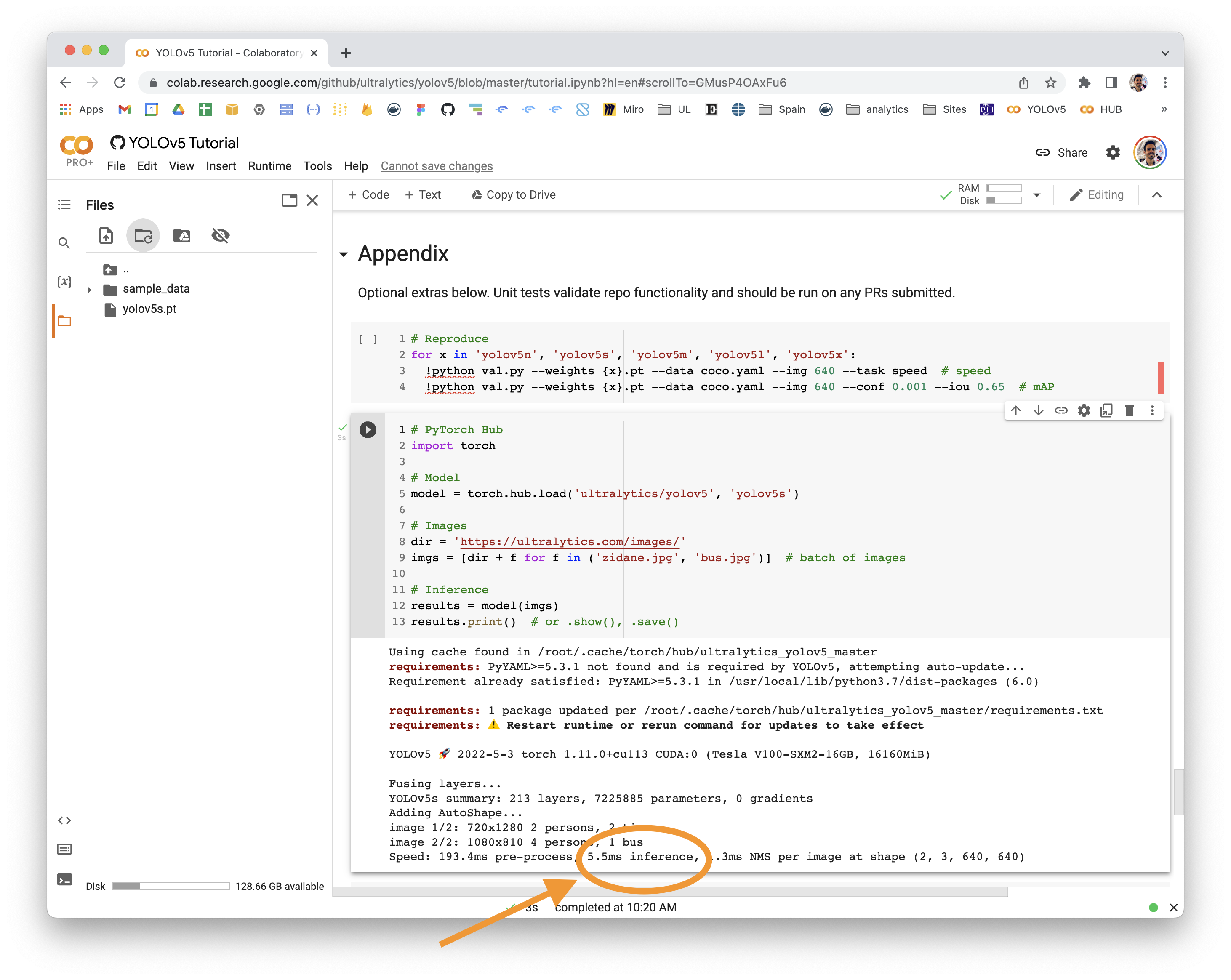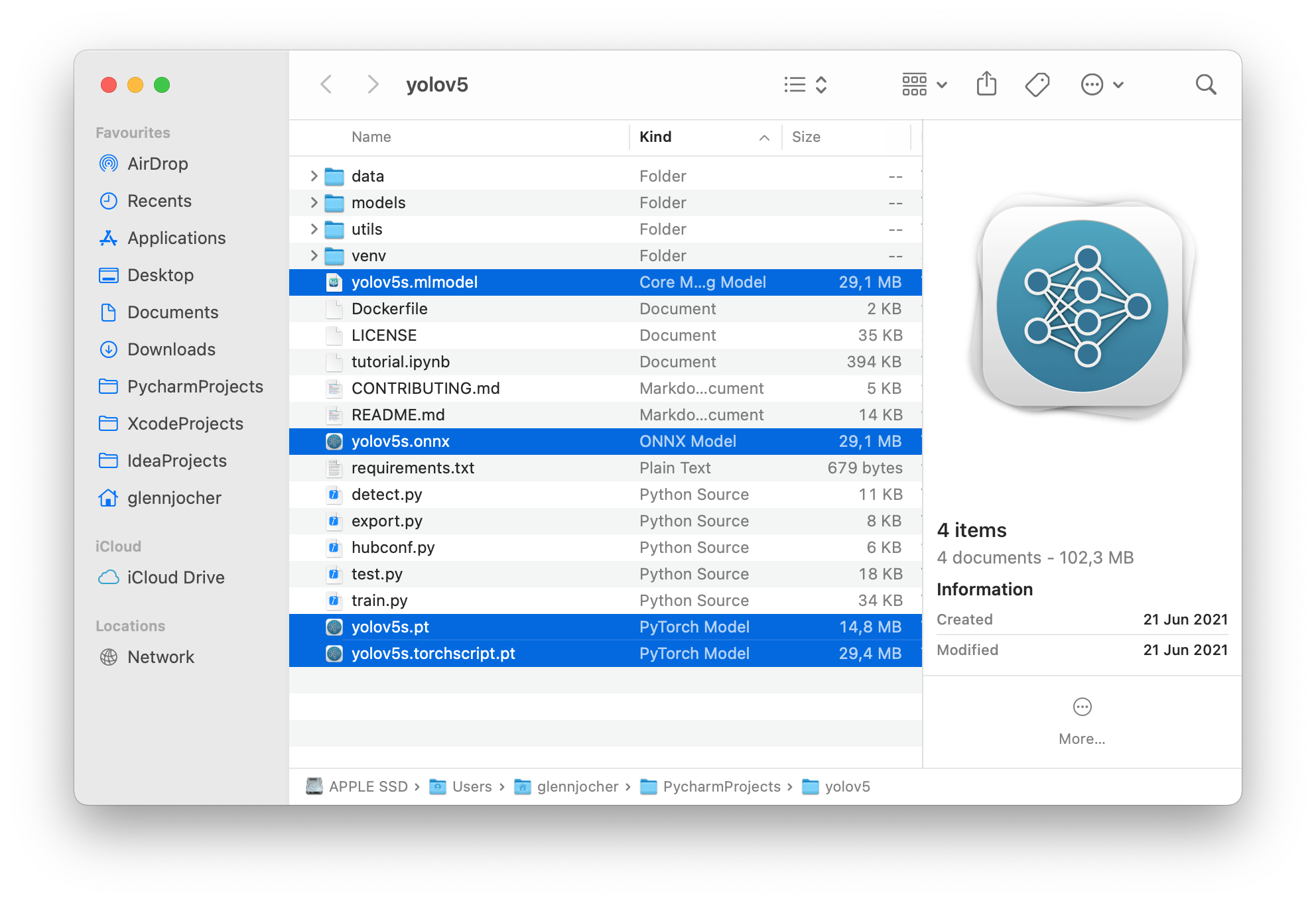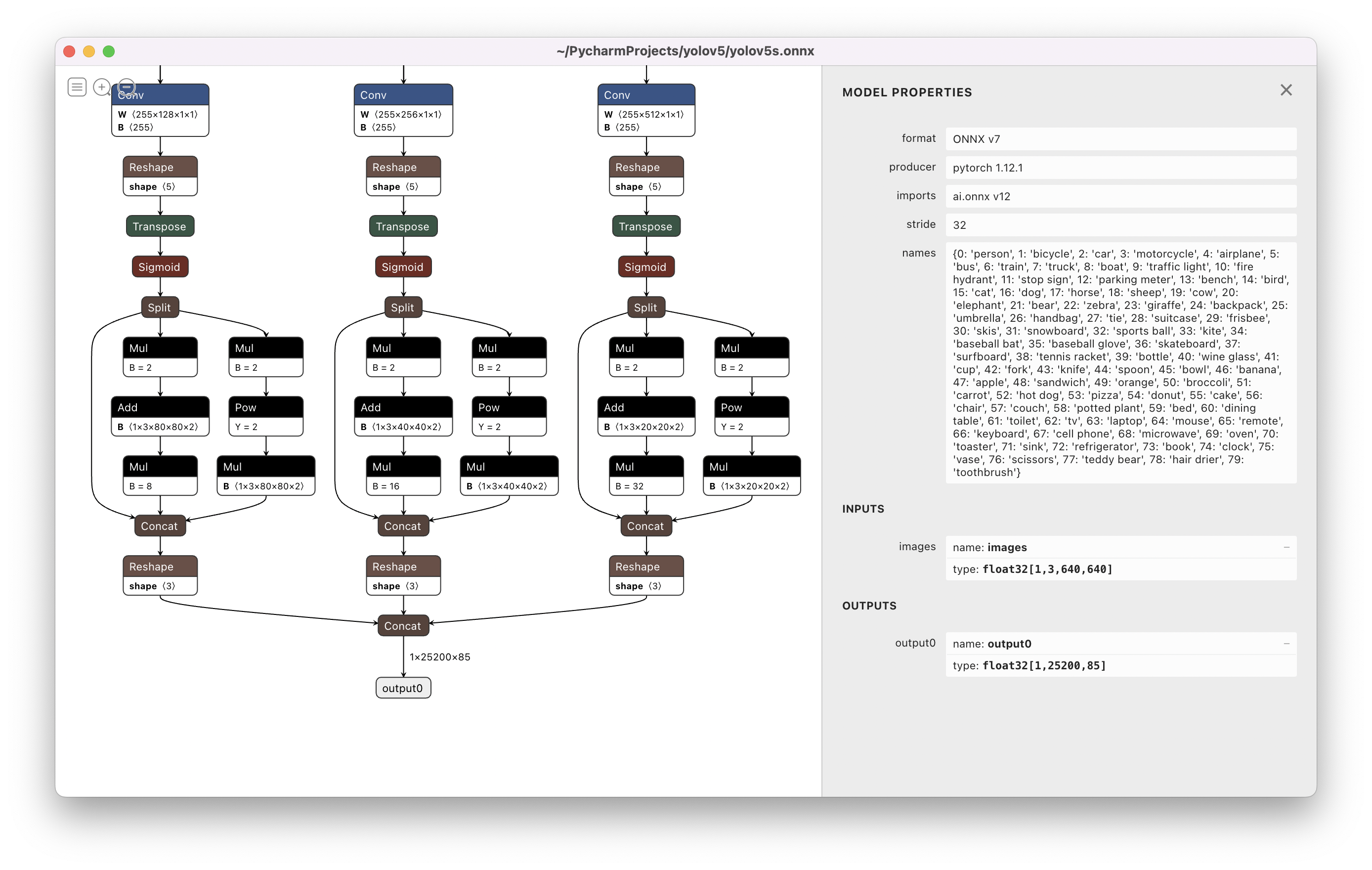-
-
Notifications
You must be signed in to change notification settings - Fork 16.7k
New issue
Have a question about this project? Sign up for a free GitHub account to open an issue and contact its maintainers and the community.
By clicking “Sign up for GitHub”, you agree to our terms of service and privacy statement. We’ll occasionally send you account related emails.
Already on GitHub? Sign in to your account
How to change input resolution in yolov5? #9881
Comments
|
👋 Hello @samanAntoni, thank you for your interest in YOLOv5 🚀! Please visit our ⭐️ Tutorials to get started, where you can find quickstart guides for simple tasks like Custom Data Training all the way to advanced concepts like Hyperparameter Evolution. If this is a 🐛 Bug Report, please provide screenshots and minimum viable code to reproduce your issue, otherwise we can not help you. If this is a custom training ❓ Question, please provide as much information as possible, including dataset images, training logs, screenshots, and a public link to online W&B logging if available. For business inquiries or professional support requests please visit https://ultralytics.com or email [email protected]. RequirementsPython>=3.7.0 with all requirements.txt installed including PyTorch>=1.7. To get started: git clone https://github.com/ultralytics/yolov5 # clone
cd yolov5
pip install -r requirements.txt # installEnvironmentsYOLOv5 may be run in any of the following up-to-date verified environments (with all dependencies including CUDA/CUDNN, Python and PyTorch preinstalled):
StatusIf this badge is green, all YOLOv5 GitHub Actions Continuous Integration (CI) tests are currently passing. CI tests verify correct operation of YOLOv5 training, validation, inference, export and benchmarks on MacOS, Windows, and Ubuntu every 24 hours and on every commit. |
|
@samanAntoni 👋 Hello! Thanks for asking about inference speed issues. PyTorch Hub speeds will vary by hardware, software, model, inference settings, etc. Our default example in Colab with a V100 looks like this: YOLOv5 🚀 can be run on CPU (i.e. detect.py inferencepython detect.py --weights yolov5s.pt --img 640 --conf 0.25 --source data/images/YOLOv5 PyTorch Hub inferenceimport torch
# Model
model = torch.hub.load('ultralytics/yolov5', 'yolov5s')
# Images
dir = 'https://ultralytics.com/images/'
imgs = [dir + f for f in ('zidane.jpg', 'bus.jpg')] # batch of images
# Inference
results = model(imgs)
results.print() # or .show(), .save()
# Speed: 631.5ms pre-process, 19.2ms inference, 1.6ms NMS per image at shape (2, 3, 640, 640)Increase SpeedsIf you would like to increase your inference speed some options are:
Good luck 🍀 and let us know if you have any other questions! |
|
Thanks for your rapid reply. My goal is running the tflite model on a specific hardware. Unfortunately none of the offer solutions are applicable there. The solution, which I would like to try, is modifying the model in a way that it gets smaller images as the input and process less number of pixels. Is it possible to modify yolov5 in this form? |
|
@samanAntoni 👋 Hello! Thanks for asking about Export Formats. YOLOv5 🚀 offers export to almost all of the common export formats. See our TFLite, ONNX, CoreML, TensorRT Export Tutorial for full details. You can export at any --imgsz you want. FormatsYOLOv5 inference is officially supported in 11 formats: 💡 ProTip: Export to ONNX or OpenVINO for up to 3x CPU speedup. See CPU Benchmarks.
BenchmarksBenchmarks below run on a Colab Pro with the YOLOv5 tutorial notebook python benchmarks.py --weights yolov5s.pt --imgsz 640 --device 0Colab Pro V100 GPUColab Pro CPUExport a Trained YOLOv5 ModelThis command exports a pretrained YOLOv5s model to TorchScript and ONNX formats. python export.py --weights yolov5s.pt --include torchscript onnx💡 ProTip: Add Output: export: data=data/coco128.yaml, weights=['yolov5s.pt'], imgsz=[640, 640], batch_size=1, device=cpu, half=False, inplace=False, train=False, keras=False, optimize=False, int8=False, dynamic=False, simplify=False, opset=12, verbose=False, workspace=4, nms=False, agnostic_nms=False, topk_per_class=100, topk_all=100, iou_thres=0.45, conf_thres=0.25, include=['torchscript', 'onnx']
YOLOv5 🚀 v6.2-104-ge3e5122 Python-3.7.13 torch-1.12.1+cu113 CPU
Downloading https://github.com/ultralytics/yolov5/releases/download/v6.2/yolov5s.pt to yolov5s.pt...
100% 14.1M/14.1M [00:00<00:00, 274MB/s]
Fusing layers...
YOLOv5s summary: 213 layers, 7225885 parameters, 0 gradients
PyTorch: starting from yolov5s.pt with output shape (1, 25200, 85) (14.1 MB)
TorchScript: starting export with torch 1.12.1+cu113...
TorchScript: export success ✅ 1.7s, saved as yolov5s.torchscript (28.1 MB)
ONNX: starting export with onnx 1.12.0...
ONNX: export success ✅ 2.3s, saved as yolov5s.onnx (28.0 MB)
Export complete (5.5s)
Results saved to /content/yolov5
Detect: python detect.py --weights yolov5s.onnx
Validate: python val.py --weights yolov5s.onnx
PyTorch Hub: model = torch.hub.load('ultralytics/yolov5', 'custom', 'yolov5s.onnx')
Visualize: https://netron.app/The 3 exported models will be saved alongside the original PyTorch model: Netron Viewer is recommended for visualizing exported models: Exported Model Usage Examples
python detect.py --weights yolov5s.pt # PyTorch
yolov5s.torchscript # TorchScript
yolov5s.onnx # ONNX Runtime or OpenCV DNN with --dnn
yolov5s_openvino_model # OpenVINO
yolov5s.engine # TensorRT
yolov5s.mlmodel # CoreML (macOS only)
yolov5s_saved_model # TensorFlow SavedModel
yolov5s.pb # TensorFlow GraphDef
yolov5s.tflite # TensorFlow Lite
yolov5s_edgetpu.tflite # TensorFlow Edge TPU
yolov5s_paddle_model # PaddlePaddle
python val.py --weights yolov5s.pt # PyTorch
yolov5s.torchscript # TorchScript
yolov5s.onnx # ONNX Runtime or OpenCV DNN with --dnn
yolov5s_openvino_model # OpenVINO
yolov5s.engine # TensorRT
yolov5s.mlmodel # CoreML (macOS Only)
yolov5s_saved_model # TensorFlow SavedModel
yolov5s.pb # TensorFlow GraphDef
yolov5s.tflite # TensorFlow Lite
yolov5s_edgetpu.tflite # TensorFlow Edge TPU
yolov5s_paddle_model # PaddlePaddleUse PyTorch Hub with exported YOLOv5 models: import torch
# Model
model = torch.hub.load('ultralytics/yolov5', 'custom', 'yolov5s.pt')
'yolov5s.torchscript ') # TorchScript
'yolov5s.onnx') # ONNX Runtime
'yolov5s_openvino_model') # OpenVINO
'yolov5s.engine') # TensorRT
'yolov5s.mlmodel') # CoreML (macOS Only)
'yolov5s_saved_model') # TensorFlow SavedModel
'yolov5s.pb') # TensorFlow GraphDef
'yolov5s.tflite') # TensorFlow Lite
'yolov5s_edgetpu.tflite') # TensorFlow Edge TPU
'yolov5s_paddle_model') # PaddlePaddle
# Images
img = 'https://ultralytics.com/images/zidane.jpg' # or file, Path, PIL, OpenCV, numpy, list
# Inference
results = model(img)
# Results
results.print() # or .show(), .save(), .crop(), .pandas(), etc.OpenCV DNN inferenceOpenCV inference with ONNX models: python export.py --weights yolov5s.pt --include onnx
python detect.py --weights yolov5s.onnx --dnn # detect
python val.py --weights yolov5s.onnx --dnn # validateC++ InferenceYOLOv5 OpenCV DNN C++ inference on exported ONNX model examples:
YOLOv5 OpenVINO C++ inference examples:
Good luck 🍀 and let us know if you have any other questions! |
|
Yes, you can edit the yaml files in /models and /models/hub. Compare https://github.com/ultralytics/yolov5/blob/master/models/yolov5m.yaml and https://github.com/ultralytics/yolov5/blob/master/models/yolov5l.yaml Only the following changes: depth_multiple: 0.67 # model depth multiple
width_multiple: 0.75 # layer channel multiple |
|
Thanks for your helpful comment. I modified In the next step, I tried model creation with the original values of In the further experiments, I have noticed that size of the input layer does not depend on the I assume, that just by one time changing the |
|
@samanAntoni yes that's correct. The model itself is not defined in width or height, it is only defined in terms of input channel counts and output channel counts per convolution. The feature sizes are dynamically determined at inference time by the size of the input divided by the size of the current feature stride, which start form 2 at the beginning layer down to 32 for P5 models or 64 for P6 models. depth multiple will scale the model to be longer, with more repeated convolutions in series, but not more channels per convolution. width multiple will scale the model in width, each convolution will include more channels, but there will not be more convolutions. Both of these scaling methods are independent of image size. Any image size that is a multiple of the largest stride (I.e. 32) can be passes to any size model. |
|
Thanks a lot for your explanation. Could you please recommend a reference to understand better the role of depth multiple and width multiple? |
|
👋 Hello, this issue has been automatically marked as stale because it has not had recent activity. Please note it will be closed if no further activity occurs. Access additional YOLOv5 🚀 resources:
Access additional Ultralytics ⚡ resources:
Feel free to inform us of any other issues you discover or feature requests that come to mind in the future. Pull Requests (PRs) are also always welcomed! Thank you for your contributions to YOLOv5 🚀 and Vision AI ⭐! |
|
@samanAntoni you can refer to the YOLOv5 documentation at https://docs.ultralytics.com/yolov5/ which provides detailed insights into the model architecture and its parameters. |







Search before asking
Question
I am using this repository in order to export yolov5 to tflite format and I am looking for any possible modification to reduce the execution time.

The first modification, which I want to change, is changing the input resolution of the model. As I read and understood '--imgsz' does not influence size of tensor in the input layer and input layer has always the fixed value of [(1, 416, 416, 3)] :
I would appratiate any suggestion in this regard.
Additional
No response
The text was updated successfully, but these errors were encountered: